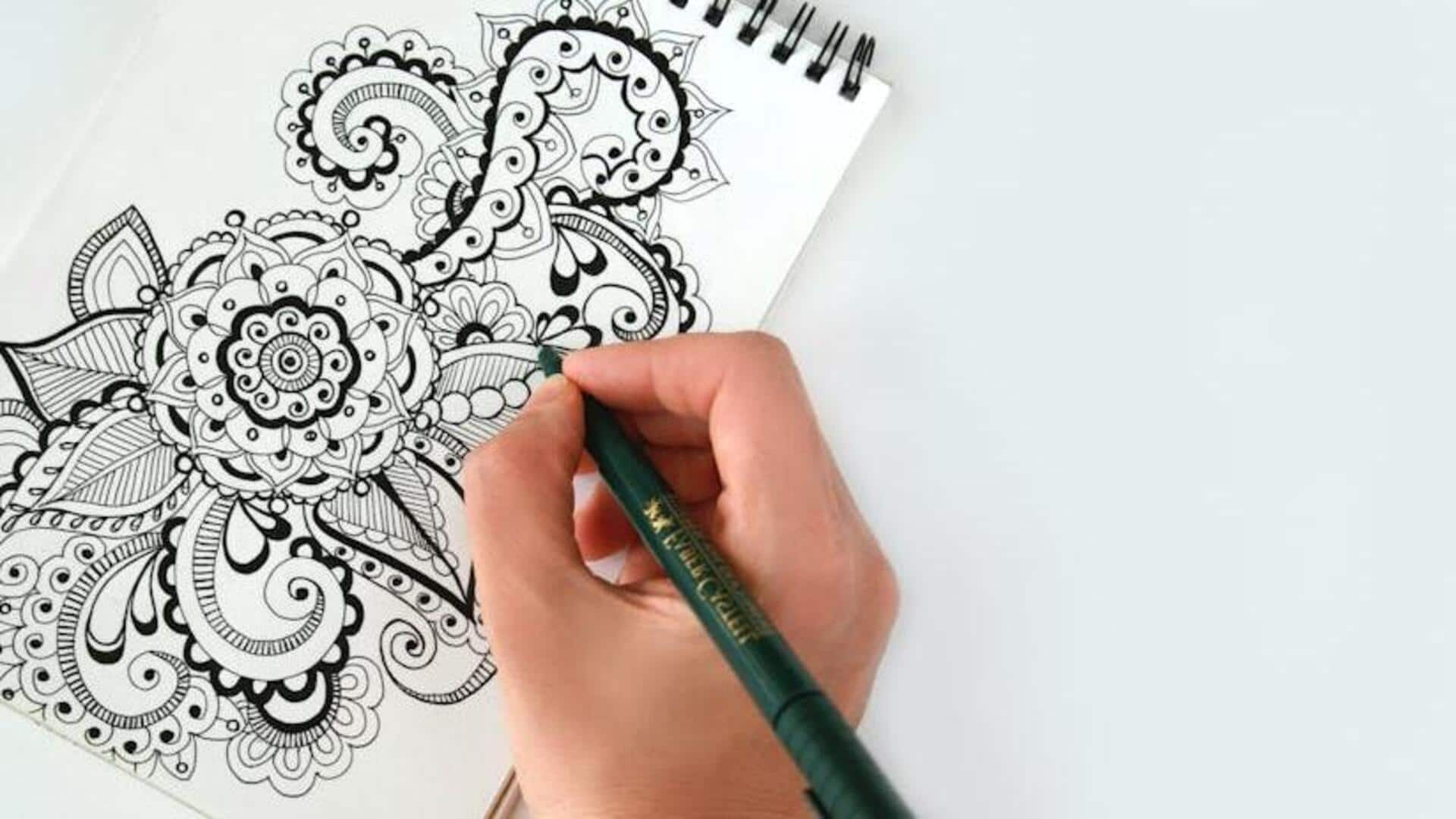
Drawing can help you improve your focus: Here's how
What's the story
Drawing exercises can be one of the simplest, yet most effective, ways to improve focus and concentration. These activities help condition the brain to remain focused on tasks, thus enhancing our overall cognitive function. By including drawing in our daily routines, we can see a noticeable increase in mental clarity and productivity. Here are five ways that simple drawing exercises can help improve focus.
Mindful doodling
Doodling for mindfulness
While doodling is usually perceived as a mindless activity, it can actually encourage mindfulness and concentration. When doodling, our mind is free to wander but remains engaged with the task at hand. This balance ensures relaxation without losing focus completely. Regular doodling sessions can train the brain to stay attentive during more demanding tasks by fostering an environment of calm alertness.
Mandala coloring
Mandala coloring for relaxation
Coloring mandalas is a structured activity that requires attention to detail and pattern recognition. This exercise encourages individuals to concentrate on intricate designs, promoting relaxation and reducing stress levels. The repetitive nature of coloring within lines helps improve focus by requiring sustained attention over time, making it an excellent practice for enhancing concentration skills.
Observational sketching
Sketching from observation
Sketching objects from observation requires acute attention to detail and spatial awareness. This exercise trains your brain to notice subtle differences in shapes, sizes, and proportions, while keeping your focus on the subject at hand. By regularly practicing observational sketching, you can sharpen your ability to concentrate on specific details in various contexts.
Blind contour drawing
Blind contour drawing practice
Blind contour drawing involves sketching an object without looking at the paper or lifting the pencil from the page. This technique forces artists to rely solely on their sense of touch and sight coordination, rather than visual feedback from their drawings. It enhances concentration by requiring intense focus on both tactile sensations and visual input, simultaneously.
Zentangle patterns
Zentangle patterns for concentration
Creating zentangle patterns means drawing structured patterns within defined spaces using repetitive strokes or shapes. Not only does this activity require precision and patience, but it also enhances one's focus over extended periods. This results in better cognitive performance through enhanced neural connections, ultimately improving mental acuity and sensory perception abilities.